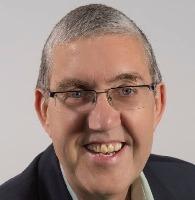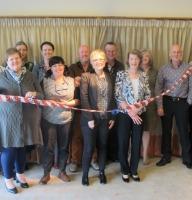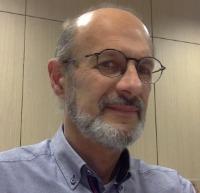Blog
Unless otherwise stated, content is shared under CC-BY-NC Licence
Welcome to the Digital Preservation Laundrette!
Matthew Addis is Chief Technology Officer for Arkivum
This blog post is both a demonstration of how to extensively torture a metaphor if you try hard enough, which I'm certainly want to do from time to time, and a look at some of the serious issues of digital preservation at an industrial scale outside of memory institutions.
The metaphor is washing machines, the industrial application is research data preservation, and the answer, perhaps paradoxically, is to choose to do less for more.
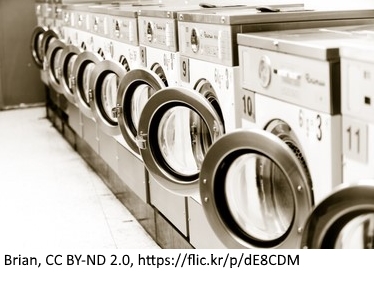 I've been involved for over 2 years now with the Jisc Research Data Shared Service (RDSS). This has the ambitious and laudable goal of providing a national Shared Service for Research Data Management to Higher Education Institutions (HEIs) in the UK, including the deposit, storage, publication and preservation of a wide range of digital research outputs.
I've been involved for over 2 years now with the Jisc Research Data Shared Service (RDSS). This has the ambitious and laudable goal of providing a national Shared Service for Research Data Management to Higher Education Institutions (HEIs) in the UK, including the deposit, storage, publication and preservation of a wide range of digital research outputs.
Bit Preservation is NOT a Question of Technology!
Eld Zierau is Digital Preservation Specialist PhD at the Royal Danish Library in Copenhagen, Denmark
And yes, it does involve technology, but technology is just a tool, in the same way as a word processing editor is a tool for a writer.
Today, there is a growing awareness of the need for bit preservation, but there are still a lot of talk about backup, hardware longevity, bit preservation as a technology solution etc. I will here focus on the technology contra non-technology parts, and I will therefore take the liberty to assume the following: It is common knowledge, that there needs to be copies of data in bit preservation, and that these copies of data are equally worthy (not backup copies of an original), and that the copies of data (replicas) are regularly checked and fixed for errors.
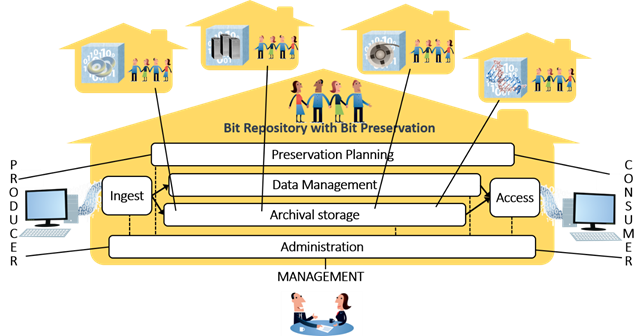
Figure text: Bit preservation with coordinated independent replica units in different organisations, expressed in OAIS terms and images from digitalbevaring.dk
Digital Music Production MK I.
Thomas Bårdsen is Audio Production Manager at the National Library of Norway
I guess the first digital thing that entered my house growing up, was music. A shiny disc of digital information, read out via laser technology. So futuristic, at the time I think it even changed my hairstyles in a more “pointy” direction. Those discs were just an end product of a whole new direction in music production. The whole music production chain aimed digital. The discs were graded and stamped as if they were jewelry. DDD meaning digital technology were used from start to finish. Music productions have in some ways been born digital for over 35 years. It has also left some strange digital collections behind. In the very early eighties, going digital was a risky and costly piece of business. The previous analog era in music technology, had at least tried to be compatible. The new approach from the industry was that of proprietary systems. Legendary record producer Richard Burgess called the approach of the early digital audio formats a winner takes all play, were larger companies hoped on maximizing profits by squeezing out all competition.
2017: A Watershed Year for Digital Preservation?
Ross Harvey is Professor at Monash University in Melbourne, Australia.
Preparing a new edition of Preserving Digital Materials with Jaye Weatherburn (Rowman & Littlefield, 2018) has provided the opportunity to reflect on a large body of material about digital preservation. What I have observed suggests strongly that in the future, 2017 will be considered as a watershed year for digital preservation.
Sometimes the progress of digital preservation seems to resemble a tortoise inching along. Solid foundations are in place, and the need for action is better understood, but these only brush the surface of the many, varied, and evolving challenges. Four challenges seem particularly resistant to change: managing digital preservation, especially its lack of integration into mainstream practice; funding digital preservation – there’s never enough; peopling digital preservation, there being a lack of skilled people; and making digital preservation fit—lack of scalability of digital preservation activities.
The Future of Television Archives
Richard Wright runs Preservation Guide, a consultancy on audiovisual preservation. Before retiring, Richard worked as a Technology Manager at BBC Information & Archives from 1994.
Not everyone knows that there even are television archives. Europe is fortunate in having a tradition of public service broadcasters. They are publicly supported in various ways (licence fee, limited advertising, direct government funding) but all have a remit to provide high-quality information and entertainment. Broadcasting can be seen as ephemera, but yesterday's ephemera becomes today's heritage. Of particular interest in a time of fake and false news is the role of public service broadcasters in providing quality factual material: news and current affairs.
Public service broadcasters, particularly in Europe, have also led the way in maintaining archives of their productions. While drama and entertainment programmes are kept for repeats and for sale to other countries, factual content is heavily recycled to add depth and interest to current programmes. In the BBC, about 30 to 40 percent of 'the news' is actually archive material. Other uses include biographies; retrospectives on people, places and political situations; cultural history; and a wide range of factual content that needs archive footage for context and historical memory. Up to 2010, about 20% of the BBC television archive was accessed each year, and 95% of that use was internal: back into the BBC for adding depth to new programmes. The other 5% was commercial use. Broadcast archives had little or no public access. In the UK, public access to BBC Archives was via copies of tapes sent from the BBC to the British Film Institute.
If I had a time machine: Letter to past-DP-newbie-me
Michelle Lindlar is Digital Preservation Team Leader at Technische Informationsbibliothek (TIB) in Germany.
Dear past self,
You left your IT job a couple of months ago to work in digital preservation. It seemed like a really exciting and good fit given your background and interests. I think you’re still trying to work out the culture shock of working in a public service environment and trying to figure out what digipres is ‘zactly. I thought a few pointers and words of encouragement from future-you-who-has-been-in-the-job-for-a-while would be good.
Stop, collaborate and listen! NSLA’s here with a successful vision
National and State Libraries Australasia (NSLA) is a leading library sector collaboration of the National, State and Territory libraries of Australia and New Zealand.
How Australasian libraries are working together on digital preservation
How often do you leave a conference, or a meeting, with the best intentions of “collaborating more”, only to see those intentions evaporate quicker than rain on bitumen on a hot summer’s day, as soon as you return to your desk and look at your email inbox? We don’t make these statements flippantly; most of us share a sincere commitment to work together, recognising that for us to move forward and progress our work, we need help from others. Sadly though, what happens next is that reality takes over. Business-as-usual kills the best intentions.
Despite this, the national libraries of Australia and New Zealand and state and territory libraries of Australia have found a model of collaboration that has proven to be extremely rewarding. National and State Libraries Australasia (NSLA) brings these ten libraries together under a shared vision of connecting library professionals to information, and to each other. The libraries have many differences – they range significantly in size; they have differing mandates, and differing priorities – and yet, NSLA is a success story.
One of the significant NSLA success stories is the Digital Preservation working group. Formed in 2012, the group brings together representatives from each of the ten member libraries to identify best practice for preserving digital content – practices that are best served by a collaborative approach.
Keep the knowledge
Panos Constantopoulos is Professor in the Department of Informatics at Athens University of Economics and Business & Digital Curation Unit in Greece
An answer to the question “what should be preserved?” would typically include digital content of various forms and related metadata. But what stands for content and where is the limit between content and metadata? The changing notion of ‘document’ and the evolution and spread of computationally supported business and research processes, entail a greater need for keeping process and contextual knowledge.
Digital content traditionally includes material that is the product or record of some activity and comes in several forms - text, graphics, images, audio, video, data sets. Recent years have witnessed a shift in content granularity and structure. This is related with the ability to manage both the identification of entities that possess independent information value and the associations of those entities. Reference to self-contained parts of documents is an old practice (chapters, sections, tables, images, columns, etc.). Yet it is in the universe of the Web and linked data that this practice becomes fully operational and on a large scale: here the parts are independently identified through their URIs following some naming scheme and the conceptual bond that makes them parts of a whole is explicitly represented in the form of appropriate relations between them. The parts can then be reused in different ways. In this perspective, it is useful to maintain the knowledge of the successive uses as well as of the contexts of use.
The first International Digital Preservation Day (#IDPD17) is finally here!
Glasgow, 30th November 2017
Dear colleagues and friends around the world,
Welcome one, welcome all! The first International Digital Preservation Day (#IDPD17) is finally here!
This day is for everyone who works in digital preservation. It’s about their work. It’s about the opportunities created by the digital materials they safeguard and make accessible. It’s about the hard work and ingenuity, often unrecognised, that makes a secure digital legacy possible. And it’s about fostering links across this growing but highly dispersed community. Supported by digital preservation networks around the world – old friends and new - IDPD17 is open to participation from anyone and everyone interested in securing our digital legacy.
Selecting a Digital Preservation System for the University of St Andrews
"We build our computer (systems) the way we build our cities: over time, without a plan, on top of ruins." - Ellen Ullman
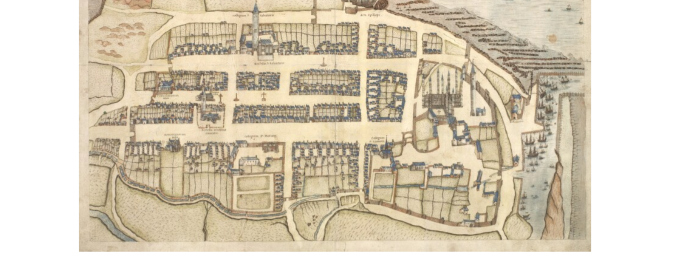
John Geddy’s map of St Andrews, c.1580. National Library of Scotland (MS.20996) http://maps.nls.uk/view/00001427













































































































































